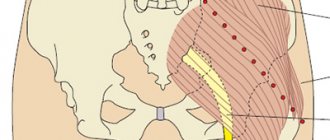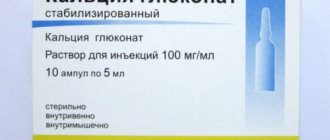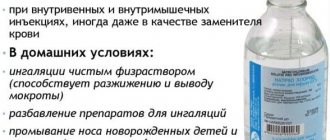Instructions for subcutaneous injections
You will need:
- a clean cloth napkin;
- packaging with the drug in a syringe and alcohol wipes;
- two sterile dry cotton balls (one of them is a spare).
Check your doctor's prescription before giving the injection. Make sure that the drug you purchased or received is appropriate. Focus on the international nonproprietary name - INN. Check whether the drug has expired or whether the syringe is damaged. The solution in it must be the color stated in the instructions and not contain foreign particles or suspensions [1,2].
How to give injections [1,2]:
- Wash your hands with warm water and soap.
- Prepare everything you need in advance. Place a clean cloth on the table, lay out the package with the drug, remove the syringe and alcohol wipes from it. Before using the syringe with the drug, keep it at room temperature for the time specified in the instructions for use. Place two dry cotton balls. Find a comfortable, relaxed position.
- Select the injection site according to the instructions for medical use of the drug prescribed for you. Carefully read the recommended injection sites and inject the drug only into the indicated areas.
- Wipe the selected injection site with one or two wipes. Let the skin dry and discard the tissues.
- Take the syringe with the injection needle and carefully remove the protective cap without touching the needle.
- Form and maintain a skin fold according to the instructions in the instructions for use. Without touching the skin with your fingers, quickly and firmly insert the needle into the fold at a right angle, holding the syringe like a pen. Slowly pressing the plunger, inject the solution until the syringe is completely empty.
- Remove the needle with a vertical movement without tilting it to the sides. Release the skin fold. Apply a dry, sterile cotton ball to the injection site.
- After the procedure, the syringe must be disposed of.
Try to choose a new injection site each time and do not inject the drug into painful areas.
Do not rub or massage the injection site.
Manufacturers include special short needles for subcutaneous injections with kits for injections of PMTRS, so the drug is administered at a right angle [3].
Preparation for manipulation
To insert the needle correctly, you first need to carry out preparatory procedures:
- Rub your hands thoroughly with soap and rinse thoroughly under running water.
- Wipe them with a cloth soaked in antiseptic or ethyl alcohol to remove germs. Manorm, even regular cologne, is suitable for disinfection.
- Wipe the top half of the ampoule with an antiseptic. Tap it with your finger so that the drops of the drug flow down.
- Break off the cap where the mark is. At the same time, direct the ampoule away from you.
- Remove the syringe from the piston side of the package and insert the needle.
- Remove the cap and insert the needle into the ampoule.
- While pulling back the plunger, draw the liquid into the syringe.
- Lift the syringe up, gently pressing the piston, release the air.
- Put on the cap.
Which syringe should I use to inject? An adult uses a syringe with a volume of up to 5 ml, for children - up to 2 ml.
How deep to insert the needle? We are talking about administering medication to an adult. The drug should be injected as deeply as possible. If it gets under the skin, a seal will appear.
Determining the area for subcutaneous injection
In order not to harm yourself, you need to learn how to correctly determine the injection sites and alternate zones [4]:
- arms - the outer surface of the shoulder in the area under the deltoid muscle and not reaching the elbow joint;
- hips - the front surface 10-15 cm from the groin and 10-15 cm from the knee along the center line of the leg; posterolateral surface from the buttock and not reaching the popliteal fossa;
- buttocks: outer upper quadrant (draw two imaginary lines: horizontal - from the place where the intergluteal gap begins to the greater trochanter of the femur and a vertical line perpendicular to it) or slightly higher, as far as subcutaneous fatty tissue allows;
- belly - approximately 5 cm from the navel, outside the linea alba.
Subcutaneous injections should be administered where the subcutaneous fat layer is most developed so that the drug does not inadvertently enter the muscle [4]. Within each zone there is space for multiple injections. As you gain the skill of administering injections yourself, you will be able to distribute zones more and more compactly.
Complications after an injection in the buttock
After an injection in the buttock, the patient may experience the following complications:
- fibrosis (scarring) of muscle fibers;
- development of contracture - stiffness of the limb due to skin tightness or muscle damage;
- inflammation of nerve endings;
- hematoma.
But the most dangerous complication is the development of embolism - blockage of blood vessels by an air bubble. It develops as a result of accidental insertion of a needle into the bloodstream, or due to improper preparation of the drug.
Another serious consequence of improper injection is an abscess - a purulent inflammation that occurs when antiseptic rules are not followed (accidental infection of the injection site). The affected area swells, becomes inflamed, and the local temperature rises. Pus forms and requires surgery to remove.
To avoid complications, you should avoid self-administered intramuscular injections. It is better to go to a day hospital, where all medical procedures are performed by qualified doctors and nurses who follow antiseptic techniques and know the specifics of preparing and administering various drugs.
How to avoid complications from subcutaneous injections
Local reactions, such as slight swelling and redness, usually go away on their own within an hour. It is worth paying close attention to complications that do not go away for a long time.
Possible complications, their prevention and treatment [5-6]:
- Induration at the injection site - infiltration - is a common complication with subcutaneous injections. Often accompanied by redness and swelling of the skin, pain. It may not resolve for a long time or, if the course is unfavorable, develop into an abscess or phlegmon. Prevention: alternating zones, observing aseptic rules, slow administration of the drug. When choosing an injection site, you should avoid areas where induration or swelling has already appeared. Your doctor will tell you how to treat such formations. Abscess and phlegmon are eliminated surgically.
- Infectious contamination of the injection site - discharge of pus, soreness, redness, increased local temperature - can occur if the rules of asepsis are not followed. It is necessary to urgently consult a doctor .
- Lipodystrophy (depletion) of subcutaneous fat can occur if injections are given in the same place. That's why it's so important to alternate zones. Another possible cause is that the injection solution is too cold.
- Fainting - to avoid loss of consciousness, do not perform the procedure while standing.
- An allergy to the drug can manifest itself as rashes, swelling, itching, and increased body temperature. If you have an allergic reaction to the drug, you should consult your doctor.
- Mechanical damage nearby tissues is possible due to the wrong choice of injection site or technique. Areas where large vessels and nerve trunks lie should be avoided. First measures:
- If it gets into a capillary, press the injection site with a cotton ball for 5-10 minutes. Can be secured with adhesive tape. If the hematoma (bruise) does not go away within a week, its area thickens or becomes hot, you need to contact a surgeon;
- if it hits the periosteum, without changing the angle of the needle, pull it back;
- in order not to inject the drug into the muscle, be sure to inject into a fold of skin, especially for patients with low weight;
- if the needle touches the nerve ending, local numbness and loss of sensitivity will appear, a lump, inflammation or swelling may occur. Be sure to consult a doctor if you experience shooting pain or decreased functionality;
- If the needle gets into the skin and breaks off, remove the fragment with tweezers. A needle that has completely sunk into the tissue must be fixed, clamping the place where it entered on both sides, and contact a surgeon.
If you adhere to the technique, the risk of complications is reduced. Asepsis, alternating zones and correct position of the syringe prevents many of them.
How to give an intramuscular injection yourself
In this situation, the injection is placed in a slightly different place. Moreover, it is more difficult to act, since there is practically no review. It is best to seek help from another person, but in extreme cases, you can give an intramuscular injection to yourself. The procedure is performed like this:
- The preparatory work is exactly the same.
- Before giving the injection, you need to sit on a chair and relax your leg.
- The injection is placed in the upper thigh. To do this, three thirds are marked on the outer side of the thigh and the middle third is visually highlighted.
- The injection is given with a quick, confident movement, as in the previous case.
Advice
If a person is thin, it is easier for him to make a fold of muscles in the thigh area, as if pinching the tubercle with his thumb and forefinger. The fold should be small, and you need to ensure that only fat remains in it, but not muscle.
Treatment in a day hospital
The main advantage of a day hospital is the ability to organize high-quality treatment without leaving home. The patient does not need to go to the hospital, but still receives professional medical care. As a result, it becomes possible:
- carrying out therapy that requires regular administration of medications;
- completion of inpatient treatment;
- preparation for complex diagnostic tests, which requires supervision by medical personnel;
- planned preventive health care for patients suffering from chronic diseases.
Treatment in a day hospital is carried out under the supervision of a doctor who develops a treatment regimen taking into account the individual characteristics of the patient’s body.
The scheme of procedures is controlled by junior medical staff: the nurse checks that the patient attends the prescribed procedures on time, checks the dosage of medications, and monitors the general well-being of the patient. The patient receives comprehensive medical care, but does not have to stay in the hospital 24 hours a day.
The main advantages of a day hospital are as follows:
- maximum psychological comfort – patients undergo treatment without leaving their home environment, which avoids additional stress;
- complex therapy and strict adherence to medical recommendations - staying in the hospital allows you to receive IVs and injections on time without the risk of complications;
- treatment without interruption from family and work - a day hospital is suitable for parents with small children, specialists in responsible positions.
Before admission to treatment, the supervising doctor develops a therapy regimen and monitors its implementation by nurses. To undergo treatment in a day hospital, you do not need any preliminary preparation or collection of documents; you just need to leave a request on the medical website. Use this service if:
- you suffer from a chronic disease and want to undergo routine treatment;
- Your doctor has prescribed you injections or IVs and you need the help of qualified medical professionals.
When choosing a day hospital, pay attention to factors such as:
- working hours – it is more convenient when medical services are provided seven days a week, since most injections must be completed in courses without breaks;
- qualifications of employees - only experienced medical workers work in the ON Clinic network;
- cost of services – stay in a day hospital is paid. But for a small fee, you get the opportunity to undergo prescribed therapeutic procedures in comfortable conditions under the supervision of doctors and nurses.











